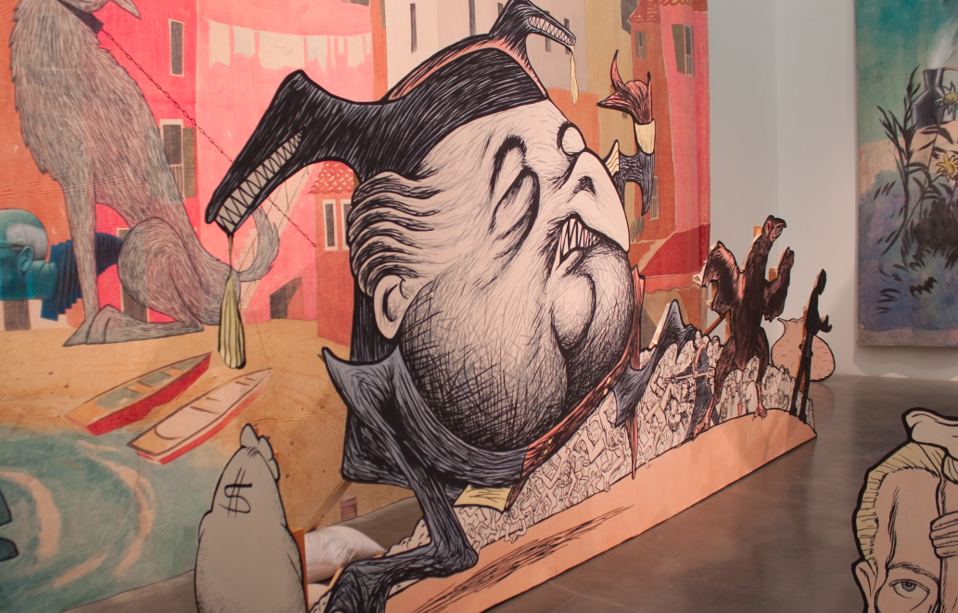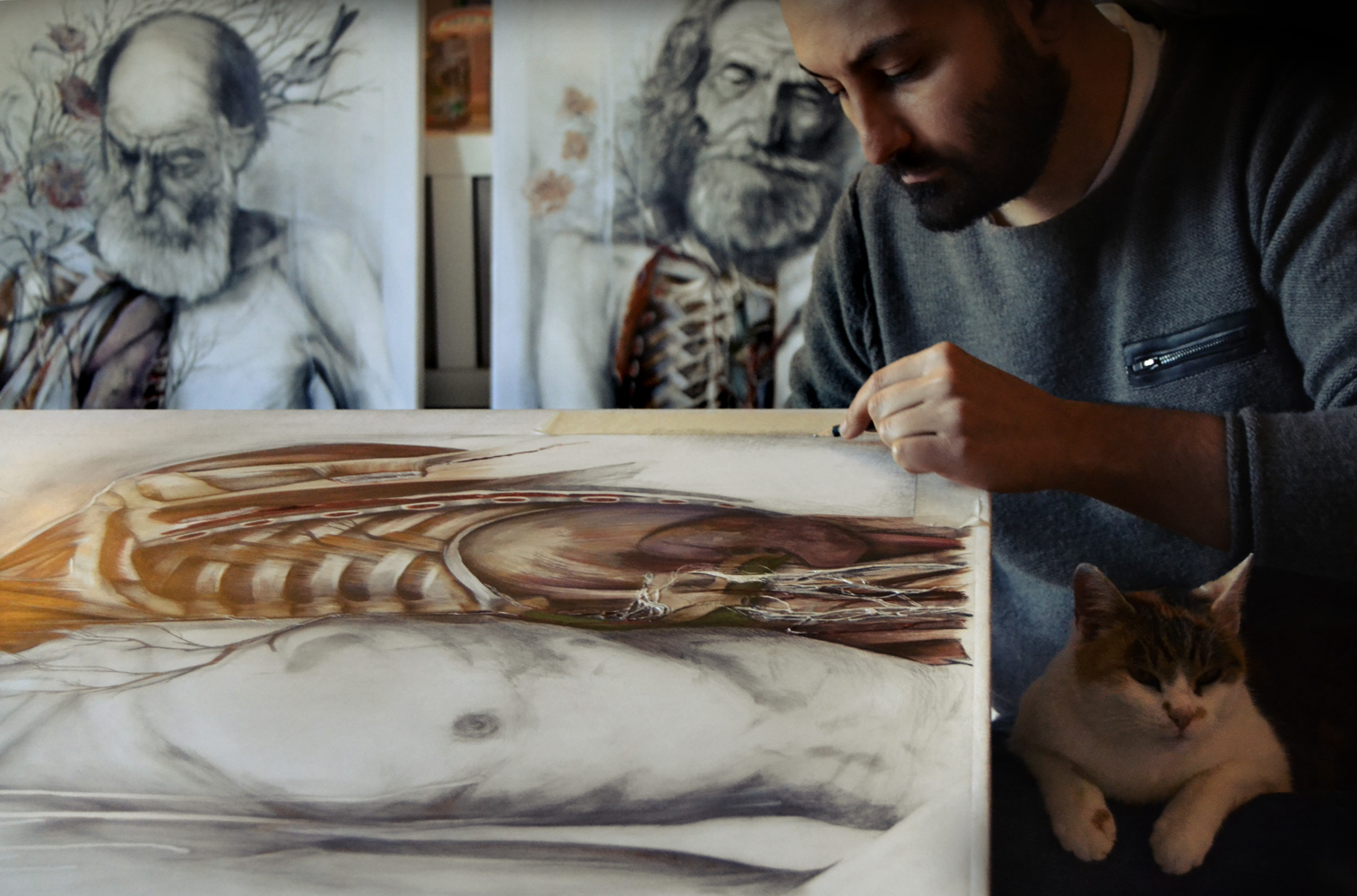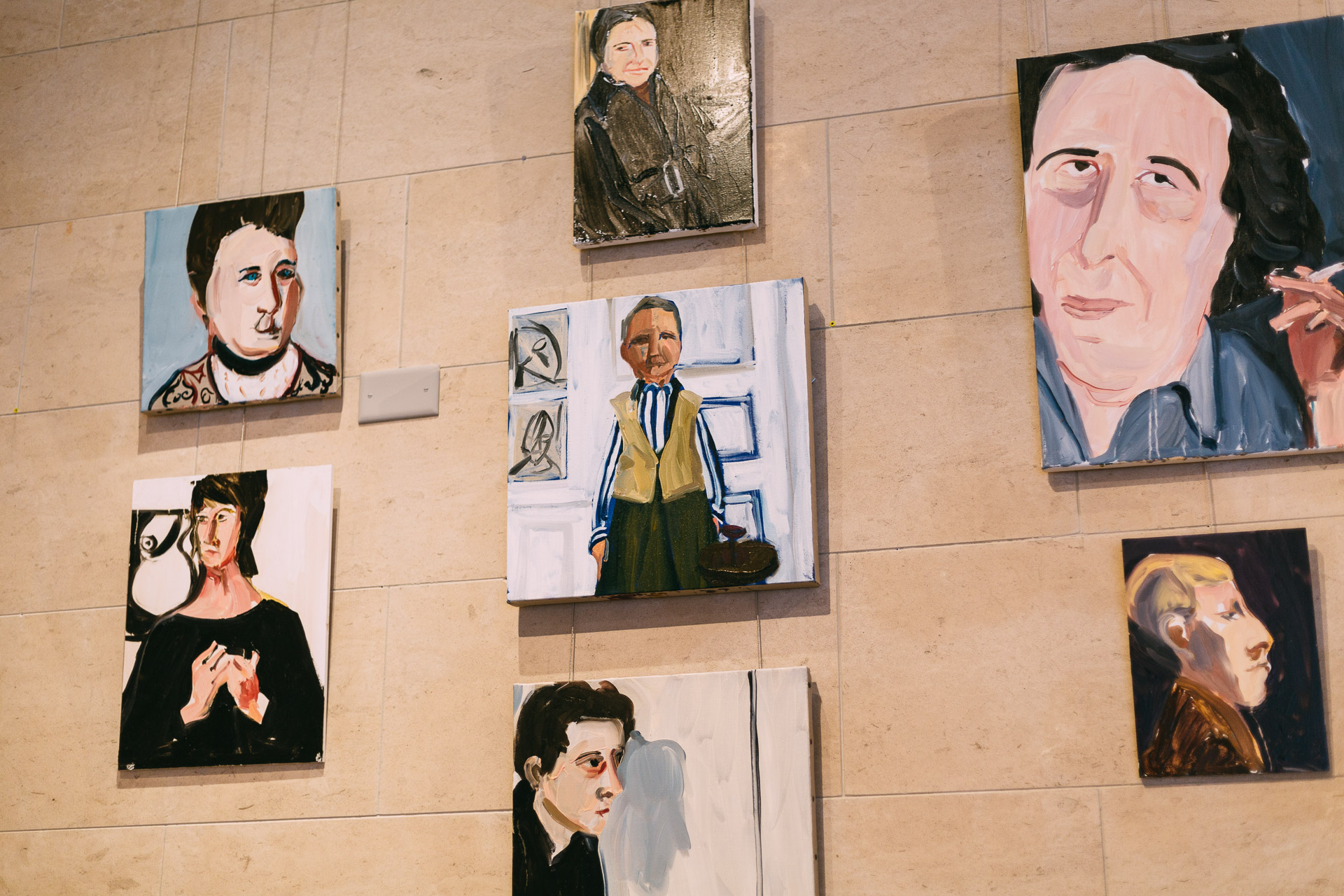
A chance to wander through the mind of Los Angeles-based artist Jim Shaw presents itself at the New Museum exhibition, The End is Here. Not only is this the largest survey in the museum’s history, but the 63-year-old artist’s first in New York.
Shaw began coining his bizarre aesthetic—appropriated from UFO conspiracy theories, erotic dreams, comic book heroes, thrift store refuse, and absurd pop culture fragments—over four decades ago in the Midwest. His grandfather was a commercial artist, and his father was a package designer so drawing came naturally. (He knew he wanted to be an artist in the ninth grade.) After graduating from the University of Michigan and co-founding proto-punk noise band Destroy All Monsters, with contemporary art legend Mike Kelley, Shaw headed to CalArts. California refined Shaw, even if he wore an old deco bathrobe around town, was considered a weirdo, and dedicated himself to the fringes of American culture.
The survey presents Shaw’s art from the 1970s onwards. It showcases his experimentation with technique through portraits that vacillate from distorted faces to hyper-real visages with deadpan expressions. The most compelling works in the show are Shaw’s recent acrylic-on-muslin paintings including massive triptych Seven Deadly Sins (2013). Mixing art historical and political references with just the right amount of strangeness, the works are narrative without being overcrowded.
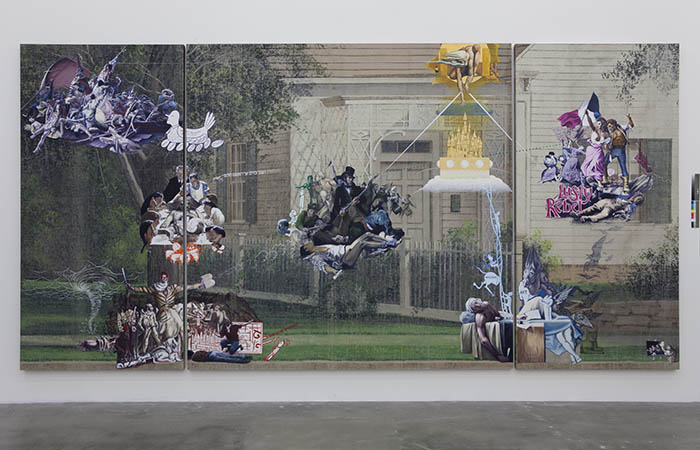
In the 1990s Shaw became obsessed with his dreams, which he translated into hundreds of comic book-style drawings and objects. Unlike Surrealism’s mysterious dreamscapes, Shaw’s erotically-charged subconscious was littered with pop culture references, jumping from Wonder Woman breast feeding to Mickey Mouse in compromising sexual positions. The nonlinear dream depictions have precise titles like Dream Drawing (“I was stumbling to the bathroom when I tripped over my own erection, which was at least 4 feet long & emerging inexplicably from another room.”), (1995).
From all Shaw’s bizarre concepts, Faith is the most prevalent. His preoccupation with new age fundamentalism, weaving Bible belt Christianity with LSD-induced spirituality, reaches a crescendo in the artist’s fictional religion, Oism. Drawn from Mormonism and Scientology, Oism is based on a virgin who gave birth to herself. The belief system, often explored through short films, comments on the absurdity of contemporary spirituality.

The artist’s religious fascination is not limited to artwork, over the last 40 years Shaw amassed a disturbing array of religious paraphernalia. Titled “The Hidden World,” the collection takes over most of New Museum’s third floor. Prophecy diagrams from the Davidian Seventh-day Adventist church, instructional mailers from Rev. Jaggers and Miss Velma, founders of the Universal World Church, colorful publications by UFO cult Unarius Academy of Science, are just a fraction of the dizzying display. The collection presents a subset of outsider art, typified by doomsday messages, esoteric symbols, holy imagery, and paranoia.
“The Hidden World,” along with Shaw’s collection of paintings bought at thrift stores across the country, might make the survey daunting, but they reveal the bizarre underbelly of American culture echoed in Shaw’s weird visual lexicon.



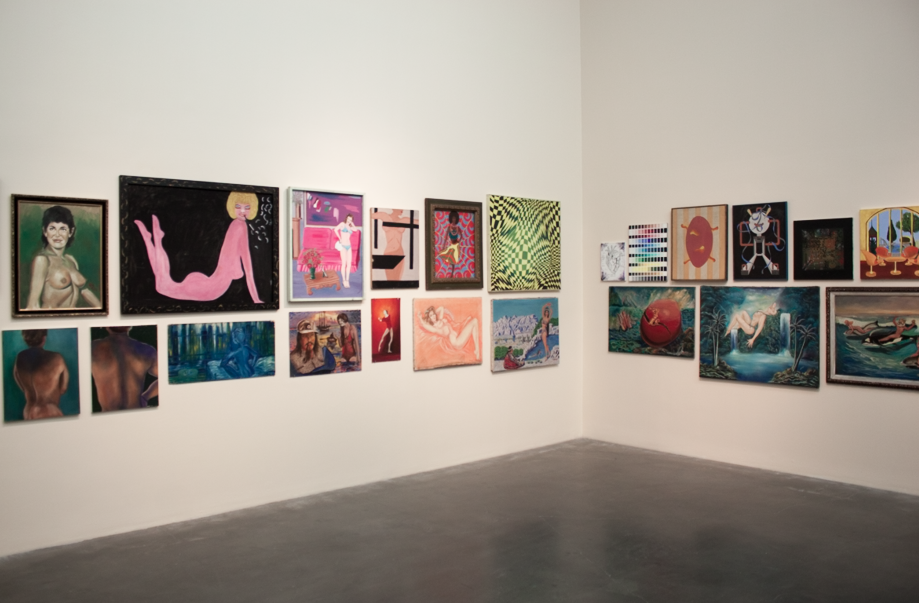

Jim Shaw: The End is here is on view until 10 Jan, 2016 at the New Museum.
Like this article? Check out Frank Stella’s show in London, or more museum exhibit highlights.


